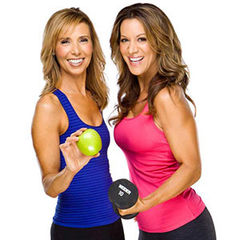You’ve probably heard that extra virgin olive oil is good for you (hello, Mediterranean diet) and that margarine is bad for you (trans fats). But what kinds of oils are best for your health? And which ones are best suited for high-temperature cooking like sautéing, stir-frying and baking versus better for salad dressing and finishing sauces? Most people are familiar with basic cooking oils, such as canola and vegetable oils, and the most popular kid on the block (with a mixed reputation), coconut oil. If you're feeling a bit confused, we’ll help you sort things out.
FATTY ACIDS
All fats, both solid and liquid, are made up of a mixture of fatty acids. Nutritionists like to use words like polyunsaturated, monounsaturated and saturated when describing different types of fats, because not all fatty acids are created equal. Some are better for your health, while others are downright dangerous.
Monounsaturated fatty acids (MUFAs):These fatty acids are heart-healthy and have been shown to reduce the “bad” LDL cholesterol and raise the “good” HDL cholesterol. Good choices include olive, avocado, almond, hazelnut, macadamia nut and canola oils.
Polyunsaturated fatty acids (PUFAs):There are multiple types of PUFA, depending on where the double-bonded carbon is located in the chain. The two most well-known PUFAs are omega-3 and omega-6 fatty acids. It’s the ratio of omega-6 to omega-3 in the diet that is of concern, as omega-6’s are pro-inflammatory and omega-3’s are anti-inflammatory. The typical American diet has a ratio of greater than 20:1 (yikes!) and the recommendation is to reduce that ratio to less than 4:1. Omega-6 rich foods do not have to be avoided, but the ratio of omega-3 foods need to be increased to help achieve a better balance in the body and to reduce inflammation. Omega-3 fatty acids are anti-inflammatory PUFAs.; sources include flax and hemp oil. Omega-6 fatty acids are pro-inflammatory PUFAs; sources include corn, cottonseed,grape seed, hemp, safflower, soybean, sunflower.
Saturated fatty acids (SFAs):Most SFAs increase a person's risk of heart disease by increasing LDL and total cholesterol. The exception seems to be coconut oil, which is solid at or below room temperature and liquid above room temp. It’s a little over 90 percent saturated, but its type of fatty acids are actually heart-healthy! The best sources of SFAs are butter, coco butter, coconut, lard, beef fat and goose fat.
Trans fats:These also are known as hydrogenated or partially hydrogenated vegetable oil or vegetable shortening. Trans fats increase your risk for heart disease and inflammatory diseases like diabetes, arthritis and irritable bowl syndrome.

Description: Subtle toasted almond flavor and aroma
Cooking uses: Sauteing, stir-frying
Primary type of fat: Monounsaturated
Smoke Point: 420°F

Description: Nutty taste, subtle avocado flavor, vibrant green color
Cooking uses: Stir-frying, finishing sauce, salad dressing
Primary type of fat: Monounsaturated
Smoke point: 520°F

Description: Light yellow or white color; solid
Cooking uses: Baking, sautéing
Primary type of fat: Saturated
Smoke point: 350°F

Description: Light, golden-colored, neutral tasting
Cooking uses: Baking, sautéing, frying, deep-fat frying
Primary type of fat: Monounsaturated
Smoke point: 400°F

Description: Heavy, nearly colorless; extracted from fresh coconuts. Choose the virgin, unrefined version for health
Cooking uses: Sautéing, stir-frying, baking
Primary type of fat: Saturated
Smoke point: 350°F

Description: Light, medium-yellow oil that is a by-product of winemaking; neutral flavor
Cooking uses: Sautéing, frying, stir-frying. Also used in salad dressings.
Primary type of fat: Polyunsaturated (omega-6)
Smoke point: 392°F

Description: Color varies from pale yellow to green depending on fruit used, pressing and processing. Choose extra-virgin, cold-pressed or expeller-pressed oils
Cooking uses: Cooking, salad dressings, sautéing, pan frying, sear, deep frying, stir frying, grilling, broiling, baking
Primary type of fat: Monounsaturated
Smoke point: Extra Virgin -320°F; Virgin - 420°F; Pomace -460°F; Extra Light - 468°F

Description: Subtle scent and flavor; popular cooking oil in restaurants. Not good if you are allergic to peanuts
Cooking uses: Frying, cooking, salad dressings
Primary type of fat: Monounsaturated
Smoke point: 450°F

Description: Comes in two types: a light, very mild Middle Eastern-type and a darker Asian type pressed from toasted sesame seeds
Cooking uses: Stir-frying, salad dressings
Primary type of fat: Equal ratio of poly (omega-6) and monounsaturated
Smoke point: 410°F

Description: Light, odorless, nearly flavorless; pressed from sunflower seeds
Cooking uses: Cooking, margarine, salad dressings, shortening
Primary type of fat: Polyunsaturated (omega-6)
Smoke point: 450°F

Description: Made by blending several different refined oils; designed to have a mild flavor and a high smoke point
Cooking uses: Cooking, salad dressings
Primary type of fat: Polyunsaturated (omega-6)
California Chopped Salad
Salad Ingredients:
1 ear corn, husk and silk removed
2 zucchini, halved lengthwise
12 extra-large shrimp, peeled and deveined
Kosher salt and freshly ground black pepper
1 head butter lettuce, torn
2 medium tomatoes, chopped into 1/2-inch pieces
1 jar hearts of palm, drained, and sliced
1 avocado, halved, pitted, peeled and diced
1 teaspoon extra virgin olive oil
Dressing Ingredients:
3 tablespoons fresh lemon juice
1 tablespoon avocado oil
1 tablespoon raw honey
1 tablespoon chopped cilantro
freshly ground black pepper
For the salad:
1. Heat a grill pan over medium-high heat or preheat a gas or charcoal grill. In a large bowl add the corn, zucchini and shrimp, and drizzle with olive oil. Season with salt and pepper, to taste.
2. Grill the corn and zucchini for 2 minutes on all sides until crisp-tender. Remove the kernels from the corn and add to a large salad bowl. Chop the zucchini into 1/2-inch pieces and add to the bowl. Grill the shrimp until the meat is opaque and cooked through, about 2 to 3 minutes on each side.
3. Cool slightly and cut into 1/2-inch pieces. Add the chopped shrimp, butter lettuce, tomatoes, avocado and hearts of palm to the bowl.
For the dressing:
In a small bowl, whisk together the lemon juice, avocado oil and honey until smooth. Add cilantro and season with and pepper, to taste. Pour the dressing over the salad and toss until all the ingredients are coated.




 by
by 








 by
by